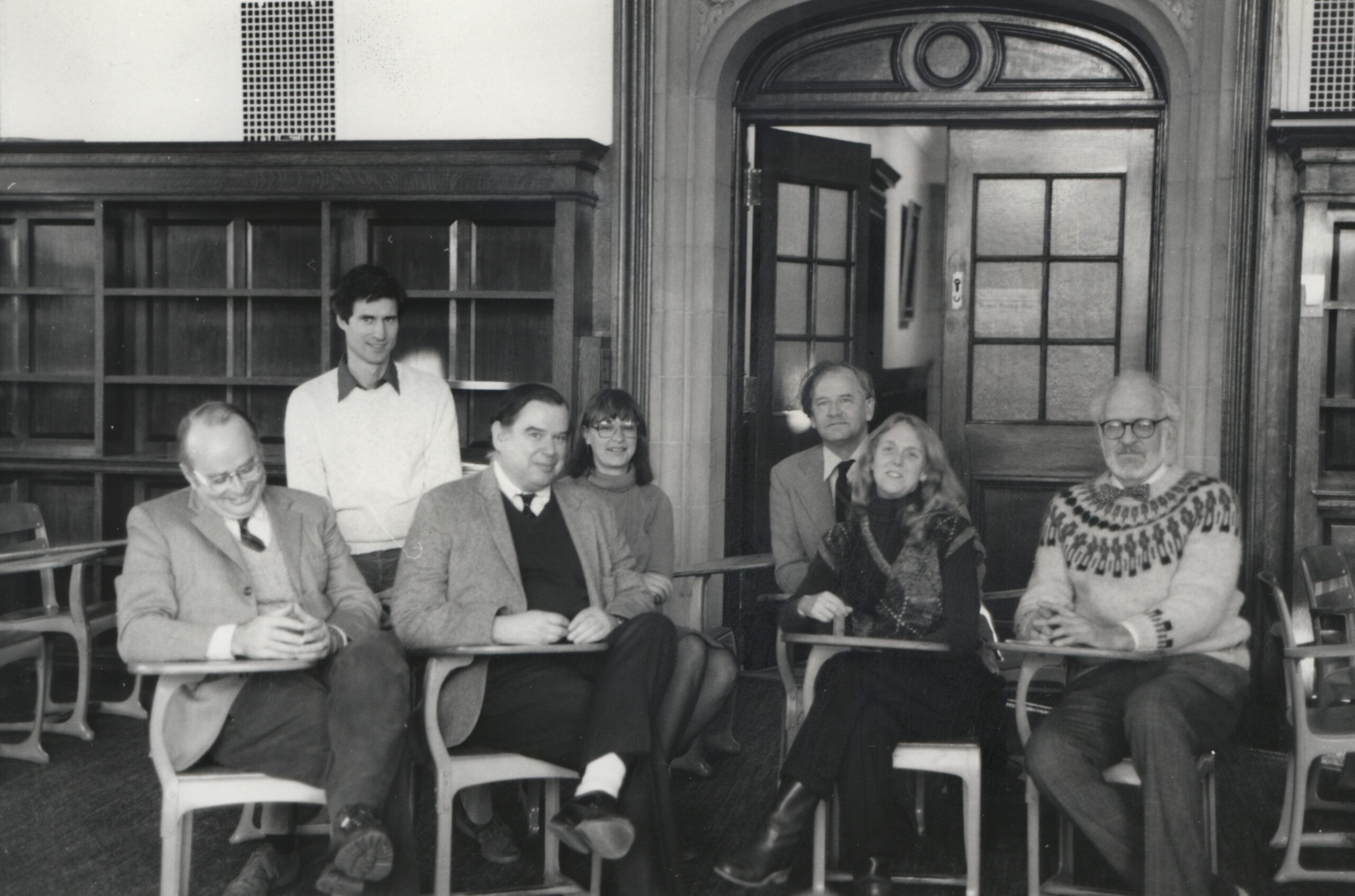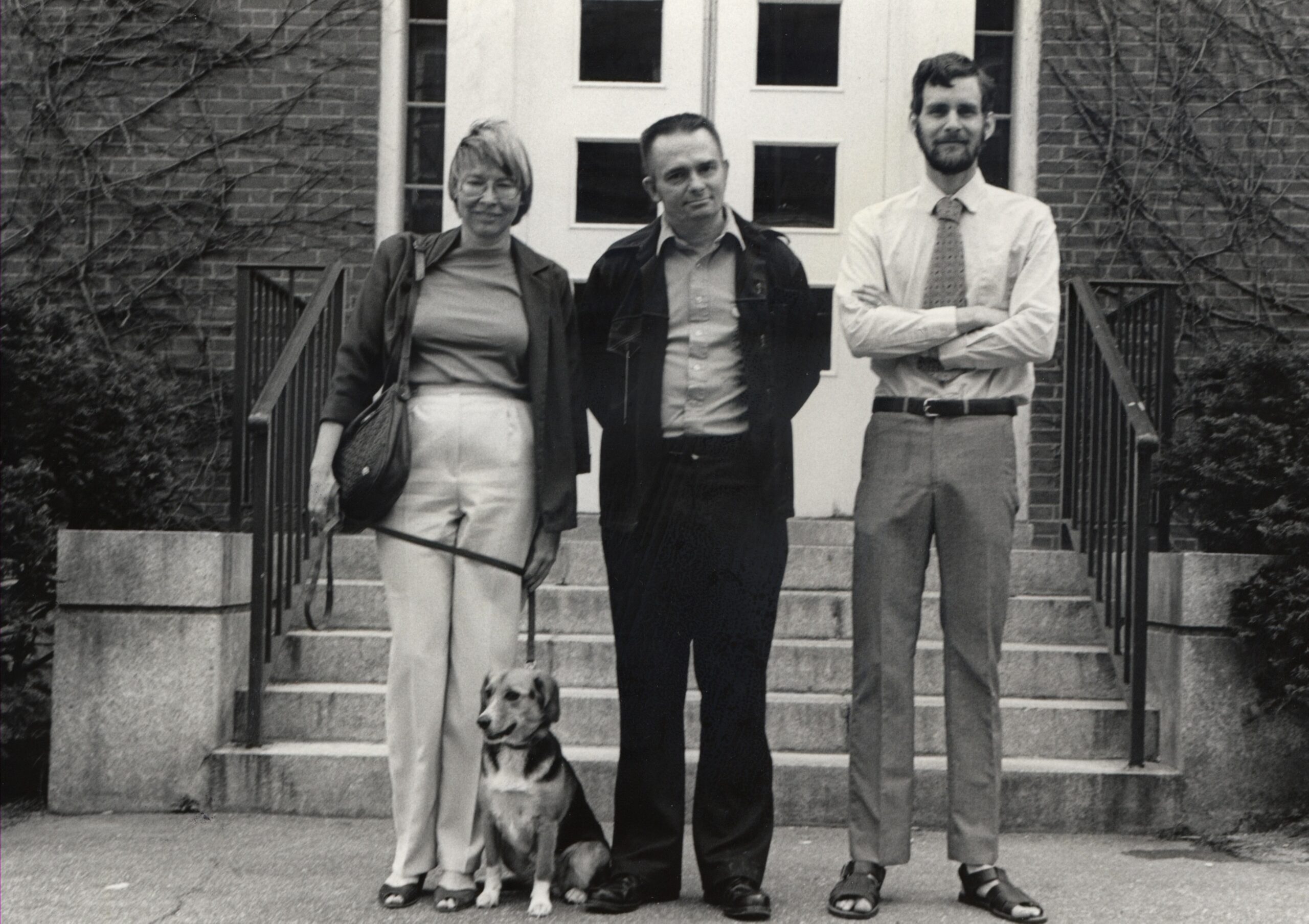First female professors ‘complicate’ the classroom
April 12, 2019
 Courtesy of the George J. Mitchell Department of Special Collections & Archives
Courtesy of the George J. Mitchell Department of Special Collections & ArchivesHanging on Associate Professor of History Sarah McMahon’s wall, tucked between letters from family members and images of the Maine landscape, hangs a quote from former President of the College Robert Edwards: “These colleges, this one in particular, grew until 1970. That year we admitted women, and for that, and a lot of other reasons, we got complicated.”
The quote resonates for McMahon, who arrived in 1982 when the College was still becoming “complicated.”
Many students today do not question the presence of female professors in the classroom, though just 50 years ago most would pass through the College having only taken classes with male instructors. But the College’s early female professors witnessed and experienced the intense growing pains of an institution which had been exclusively male for over two centuries.
Arriving at Bowdoin
The first women to teach at Bowdoin did so during World War II, when the College did not have enough men to fill its ranks. In 1943, Ruth Marion Holmes, wife of a Bowdoin math professor, was hired as an instructor of mathematics, and Ruth Yeaton and Marguerite Little were hired to teach meteorology. The three women were quickly dismissed when their male counterparts returned at the end of the war in 1945.
A more permanent move towards a gender-diverse faculty came with the College’s shift to co-education in 1971, when admissions allotted 300 slots for women.
“Bowdoin was not the only college making this transition,” said Helen Cafferty, the first female professor in the German department and William R. Kenan, Jr., Professor of German Emerita. “They were all doing it. Because of 1968—the student uprisings, anti-bourgeois sentiment—there was the feeling that single-sex education was no longer appropriate. The women’s movement had begun.”
 Courtesy of the George J. Mitchell Department of Special Collections & Archives
Courtesy of the George J. Mitchell Department of Special Collections & ArchivesAlthough it had begun, it progressed slowly at Bowdoin. While the transformation of the student body was immediate, the shift in the faculty was far more gradual, largely due to the small size of the faculty and the low turnover rates of tenured professors.
In 1968, Bowdoin began appointing women to temporary positions, as part-time lecturers and replacements for men on sabbatical. It was not until 1972 that the College hired Cafferty and Melinda Small, the first female faculty members to be reappointed and tenured. By 1982—10 years after Cafferty and Small arrived at Bowdoin—only nine other women had received tenure or would receive tenure in the future.
“I suddenly realized I was in a kind of fishbowl,” said Cafferty. “There were so few women students and even fewer women faculty. Becoming so visible was disconcerting to me. I felt a little restricted. The campus was still in an old New England, sort of WASP-y place.”
Women’s experiences at Bowdoin varied greatly depending on their department. McMahon, who arrived in 1982, had a positive transition to the College due in part to the support of the history department. According to McMahon, the department was looking for someone to teach women’s history, at the time a large gap in the curriculum.
“They wanted to hire a woman,” said McMahon. “I was very fortunate, my department really was welcoming. In fact, they were so supportive that they kept cobbling positions for me to stay until a tenure track position opened up.”
Across the quad in Sills Hall, Barbara Boyd, now the Winkley Professor of Latin and Greek, had a starkly different experience. The classics department had been resistant to hiring a woman, and Boyd believes the only reason she had been hired was because of pressure from the dean’s office to diversify the department.
“[My colleagues] made it very difficult for me. They really didn’t really want me to stay. They really wanted me to say bye-bye,” said Boyd. “I think there was this distinctive kind of ingrown boys’ club quality that I think the College as a whole had, but that it had really stayed in the classics department.”
Boyd’s colleagues made her feel unwelcome, often in unsubtle ways. Once, Boyd contracted the flu suddenly and, after a vomiting spell in her office, told her colleagues that she would be absent for a few days. They shot each other excited glances. Later, Boyd realized that they had jumped to the conclusion that she was pregnant and would consequently have to leave—Bowdoin, of course, had no maternity leave at the time.
However, most women experienced treatment somewhere between these two extremes. Many felt they were treated as equals by their contemporaries but that there was a disconnect with older members of the faculty.
“They were really more awkward than anything,” said Cafferty of her colleagues in the German department. “They were ready to put their coat down for you to walk on. They were very polite, but they didn’t really necessarily treat you like a colleague.”
In such an environment, women relied heavily on their female colleagues for support. Through the 1980s, women across departments came together through book clubs and potlucks, reading feminist theory, presenting their own research and sharing tips on how to navigate interactions with difficult colleagues.
“We all could almost fit around a single table at Moulton Union. One was deeply aware of being a member of a very small group,” said McMahon. “I am so grateful for all of the women who came before me, who provided support. I really mean that. The women who came before me were astonishing.”
 Courtesy of the George J. Mitchell Department of Special Collections & Archives
Courtesy of the George J. Mitchell Department of Special Collections & ArchivesTime in the Classroom
During the 1970s and ’80s, as the College transitioned to co-education, faculty members taught some of the first women to attend the school.
“In the early years, the women who came to Bowdoin were really tough. They were very outspoken,” recalls Cafferty.
Cafferty, Boyd and McMahon fondly remember their students during their first few years of teaching, men and women alike. Their time in the classroom was the best part of the job. Most of their favorite students, however, were women.
At the time, students were accustomed to male professors and their teaching styles, which posed a challenge to the female professors.
“My colleagues had cults of personalities. Students took courses with them, not because they loved Greek or wanted to read Homer. What they loved was the talk about the latest football game, the occasional dirty joke—that kind of male bonding,” said Boyd.
Women who were highly trained in their field, and equally as qualified to teach as their male counterparts, found themselves judged unfairly because they were unable to maintain such rapport. One of Boyd’s colleagues criticized her because she was “failing to attract the jockstraps like they were used to.”
This attitude became harmful to professors’ careers when students submitted course evaluations. Evaluations were crucial to securing tenure, and students held female professors to higher standards than they did male professors.
“[Students] admired authoritarian, fun, no-nonsense kind of people if they were male. But if women acted that way, they didn’t like it,” said Cafferty. “There was a lot of discussion when the evaluations came in about whether this played a role in the way women were evaluated versus men. Who has the authority to speak? Who gets evaluated positively for doing so?”
Maternity Leave
When the first women arrived, the College’s faculty handbook made no mention of maternity leave. This remained the case until 1986, over 15 years after women began teaching at Bowdoin.
According to the College’s first policy, “Childbirth entitles a member of the Faculty to six weeks leave of absence with fringe benefits.” The faculty member was also responsible for making “appropriate arrangements to ensure course continuity” during their absence.
In 1986, McMahon and Rachel Connelly, now the Bion R. Cram Professor of Economics and chair of the Department of Economics, were among the first professors to give birth while on the faculty. Both babies were born in the summer, so the College’s new policy did not apply to them. They received no maternity leave benefits and both were expected to continue research. When McMahon had her child in June, a member of the administration thanked her for not “inconveniencing” her department. Both professors returned to class in the fall.
“It was stupid what I did,” said Connelly of juggling childcare and a full class schedule. “It was ridiculously risky and potentially dangerous for the child and the mother and for our students. As an institution, one should try to minimize risks. And this was not minimizing anybody’s risk. It was sort of just ridiculous.”
Aside from a lack of formal maternity leave policy, the College provided little childcare support. The Children’s Center did not open until 1988, and even then only provided care for children over the age of two, leaving parents of infants with few options. After giving up on several partial daycare centers, McMahon and her husband hired a babysitter. Connelly’s husband stayed home with their children.
“Perhaps it is not a surprise that Bowdoin did not have a full-fledged childbirth policy and any kind of support for childcare,” said McMahon. “The reality is you don’t have to create those unless you’ve got a demand. It took women having children.”
Value of Women in the Classroom
Reflecting on her career, McMahon stresses the importance of a gender-diverse faculty. She attended Wellesley, where the faculty had always been more than half women.
“If Wellesley had looked like Bowdoin did in 1974, teaching at a college wouldn’t have seemed like a possibility for me,” she said. “It made a huge difference. Having professors who were role models helped me realize that I could do that, too.”

Comments
Before submitting a comment, please review our comment policy. Some key points from the policy: